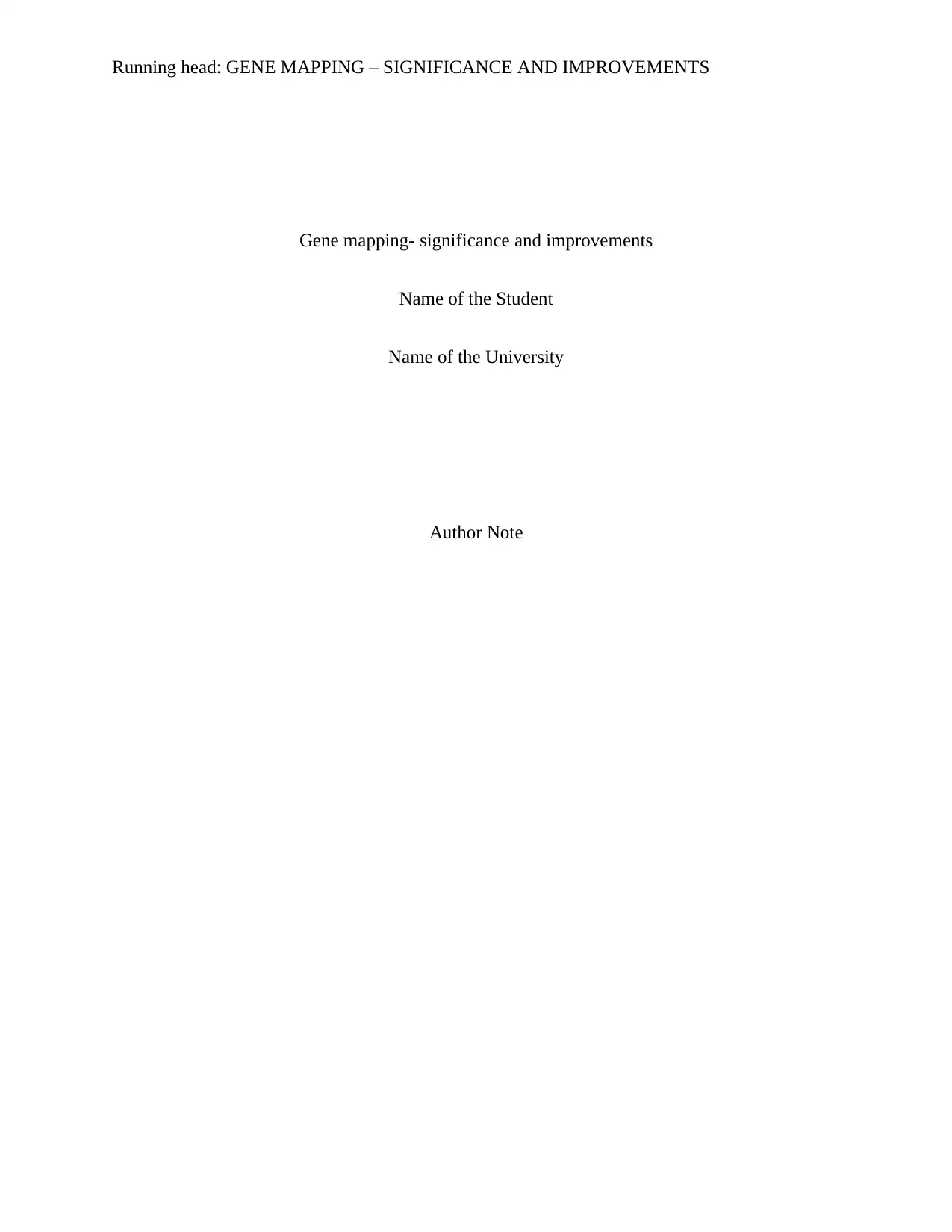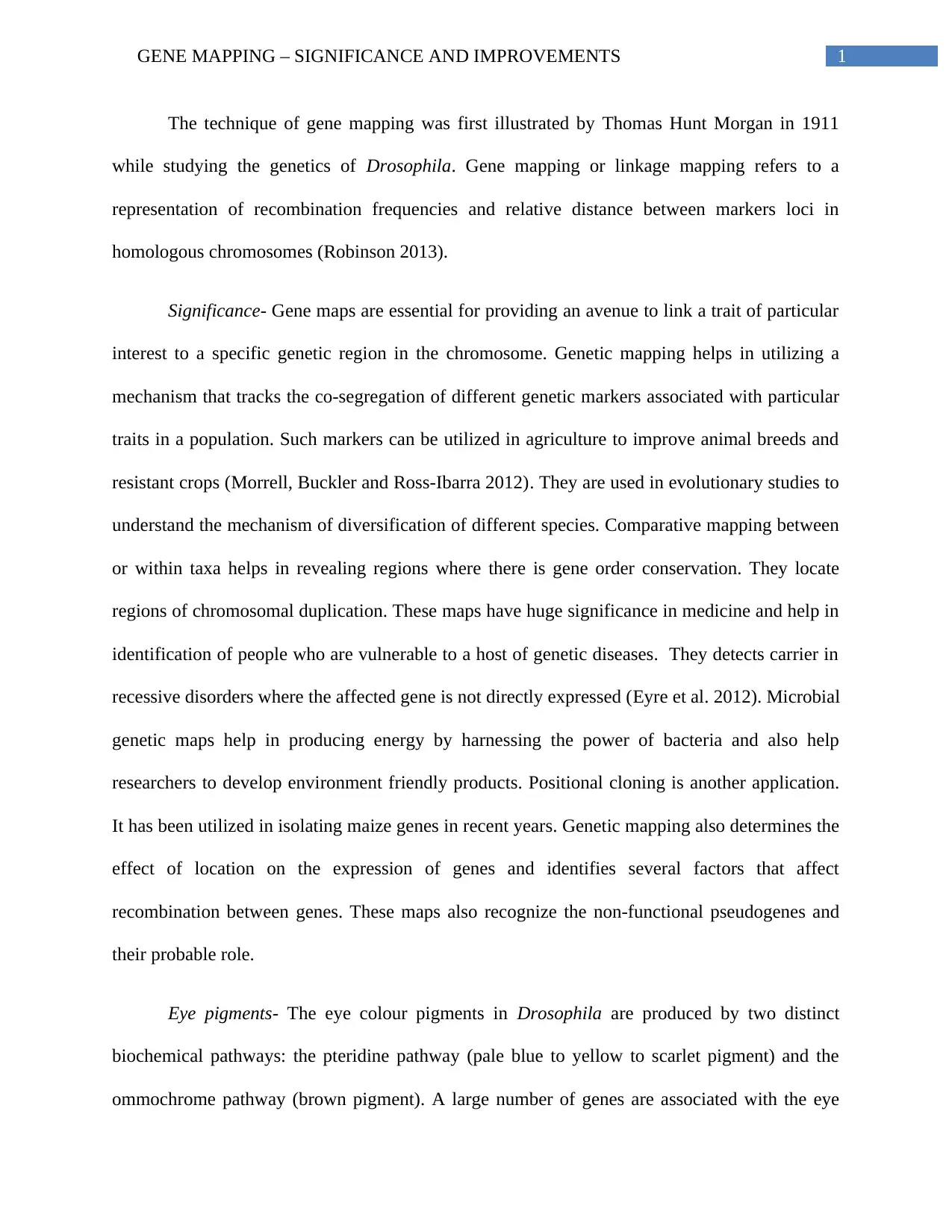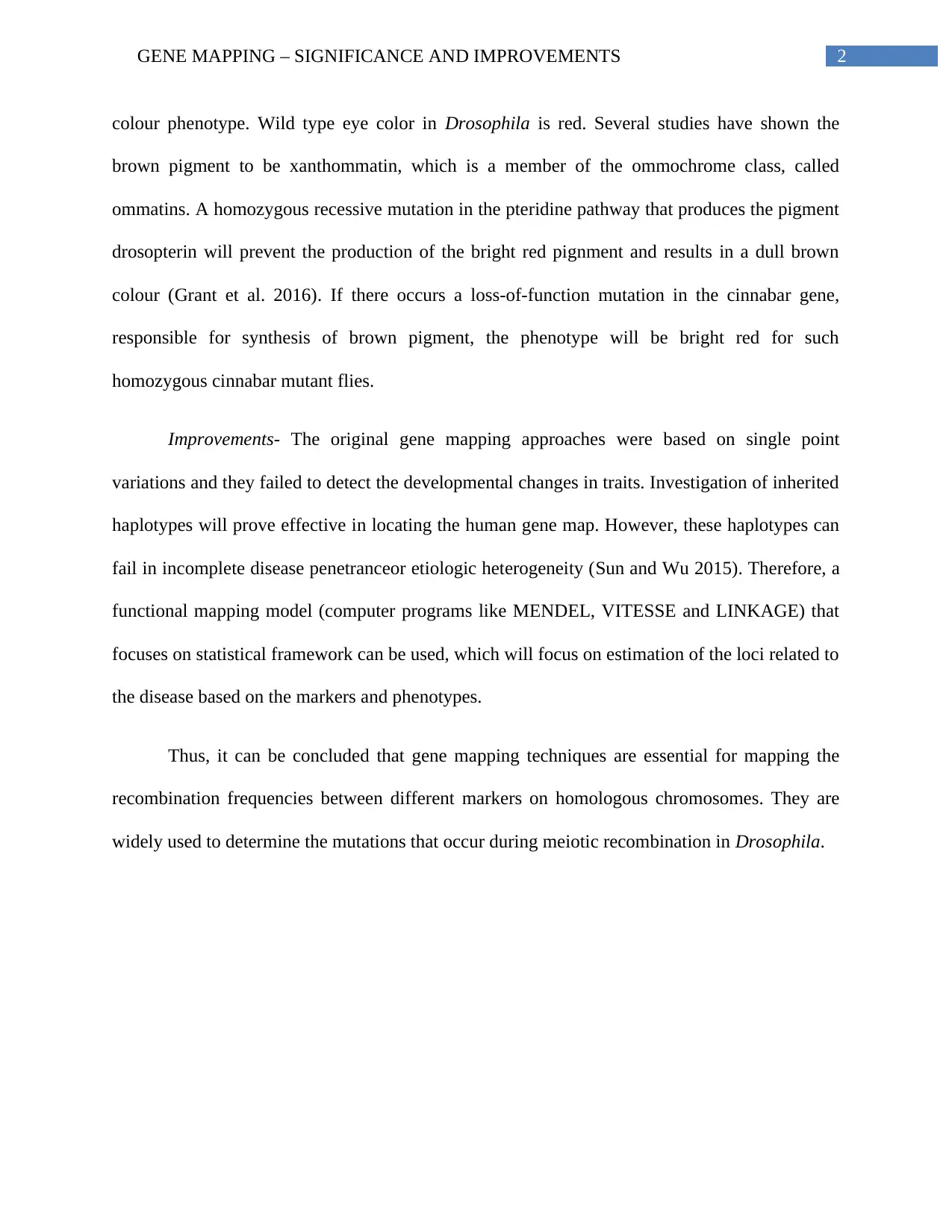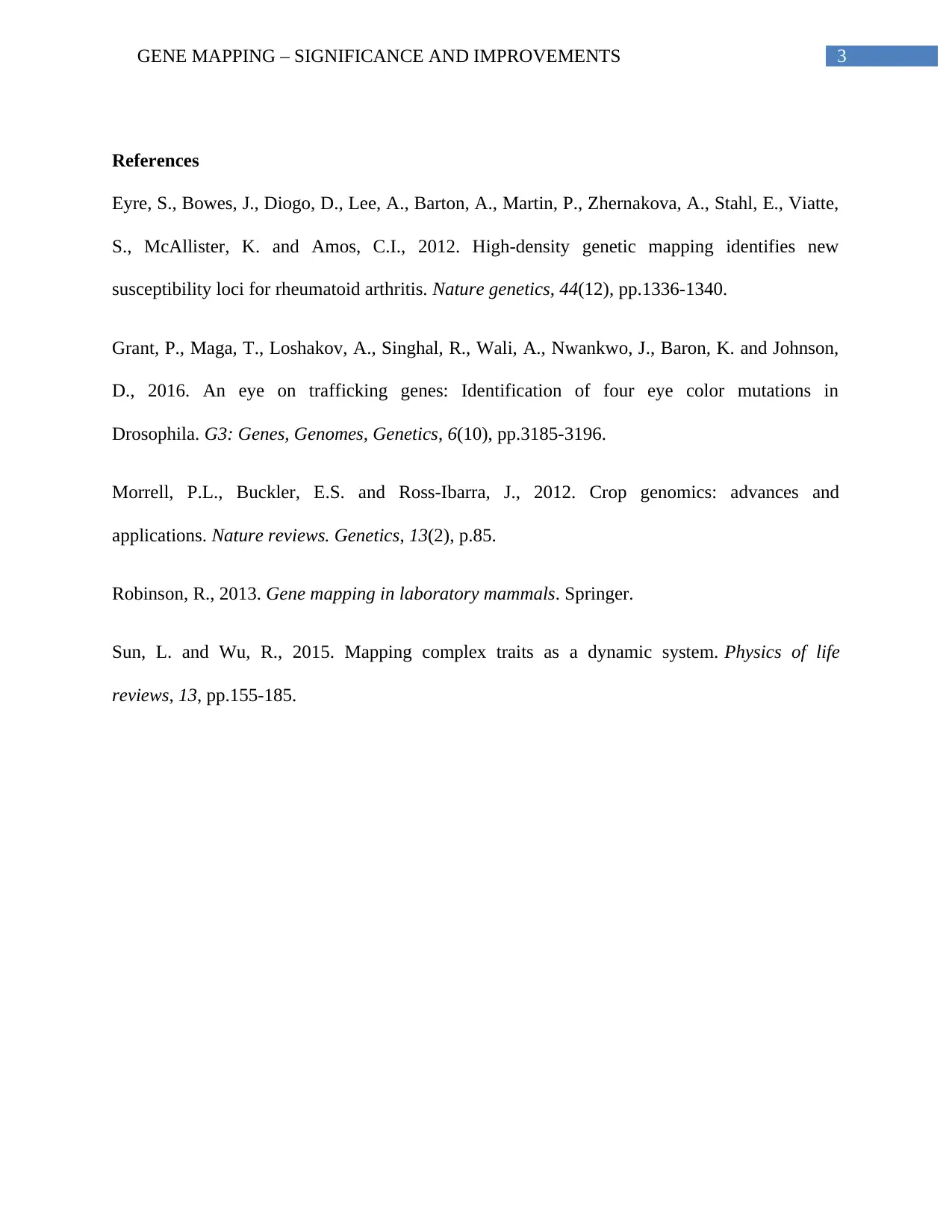Gene Mapping Report: Exploring Significance and Recent Improvements
VerifiedAdded on 2020/03/01
|4
|807
|16
Report
AI Summary
This report provides an overview of gene mapping, starting with its historical context and significance. It explains how gene mapping, initially illustrated by Thomas Hunt Morgan, represents recombination frequencies and distances between markers. The report highlights the importance of gene maps in linking traits to genetic regions, improving animal breeds and crops, and understanding species diversification. It also covers applications in medicine, microbial genetics, and positional cloning. The report further discusses improvements in gene mapping techniques, including the use of functional mapping models and the investigation of inherited haplotypes. The report concludes by emphasizing the importance of gene mapping techniques for determining mutations and mapping recombination frequencies between different markers.
1 out of 4






![[object Object]](/_next/static/media/star-bottom.7253800d.svg)